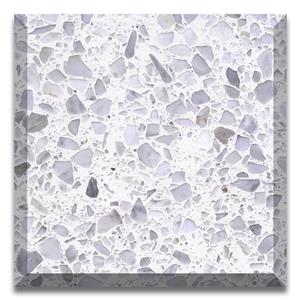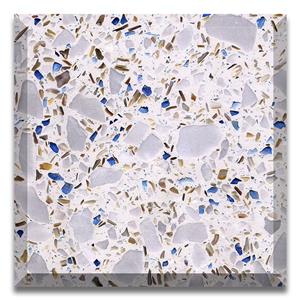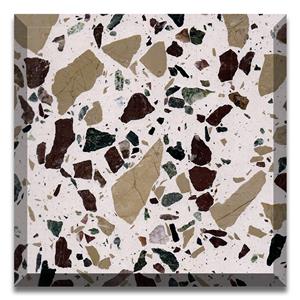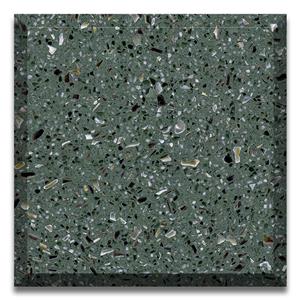How to Choose the Right Terrazzo Flooring

Terrazzo flooring has evolved from a traditional material used in public buildings to a highly sought-after design element in contemporary architecture. Its unique blend of durability, aesthetics, and sustainability makes it a preferred option for both residential and commercial spaces. Yet, choosing the right terrazzo floor is not as simple as picking a color. From aggregate size to slab thickness and color tone, every detail influences the final performance and appearance.
This guide delves into the essentials—from what is terrazzo to the technical considerations that determine its long-term value.
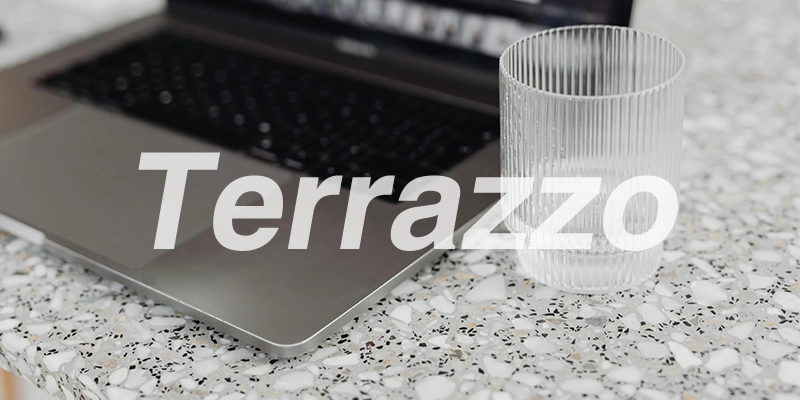
What Is Terrazzo Flooring?
When people ask, what is terrazzo flooring, the simplest answer is that it is a composite material made from marble, quartz, granite, or glass chips embedded in a cement or epoxy binder. After curing, the surface is ground and polished to achieve a smooth and reflective finish.
Originating in Italy during the 15th century, terrazzo was first used by Venetian workers who reused marble fragments to create cost-effective yet beautiful flooring. Today, modern terrazzo combines advanced binders with industrial polishing technology, resulting in a material that's not only elegant but also extremely resilient.
Understanding Terrazzo Floor Composition
A high-quality terrazzo floor typically consists of three core components:
Aggregates – These are the decorative chips that define the surface's texture and color. Common
choices include marble, granite, glass, or recycled stone.Binder Matrix – This can be cement-based or epoxy-based, depending on the project's performance
requirements.Divider Strips – Often made from brass or aluminum, these control cracking and separate colors or
design sections.
The choice between cement terrazzo and epoxy terrazzo depends on the installation site. Epoxy terrazzo allows for thinner layers and vibrant colors, while cement terrazzo is more breathable and ideal for outdoor or moisture-prone environments.
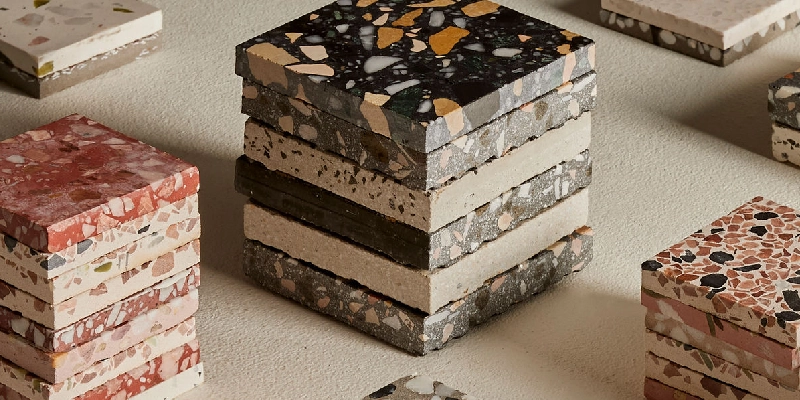
The Importance of Thickness in Terrazzo Flooring
Thickness directly affects both the structural performance and durability of terrazzo.
Standard thickness for epoxy terrazzo is around 6–10 mm, while cement terrazzo can reach 20–25 mm.
A thicker slab provides better crack resistance and longevity but may require additional substrate preparation.
For high-traffic commercial areas such as airports, schools, and shopping centers, a thicker floor ensures better wear resistance.
If using terrazzo tiles, verify that the tile thickness matches your subfloor conditions and load requirements. Improper thickness can lead to stress cracks or uneven surfaces.
Aggregate Selection: Size and Color Coordination
Aggregates play a decisive role in determining the visual effect of terrazzo flooring. Larger aggregates (10–15 mm) provide a bold, dramatic pattern suitable for spacious lobbies, while smaller aggregates (4–8 mm) deliver a more refined, homogeneous surface ideal for minimalist interiors.
Color contrast is another key factor. Designers often use white or light-colored bases to highlight dark marble chips or glass fragments. The interplay between aggregates and background hues can influence not just aesthetics but also how light interacts with the surface.
For white terrazzo floors, the aggregate color must be carefully balanced to prevent visual noise. Cool-toned marble chips in light gray or beige provide a calm, timeless appearance.
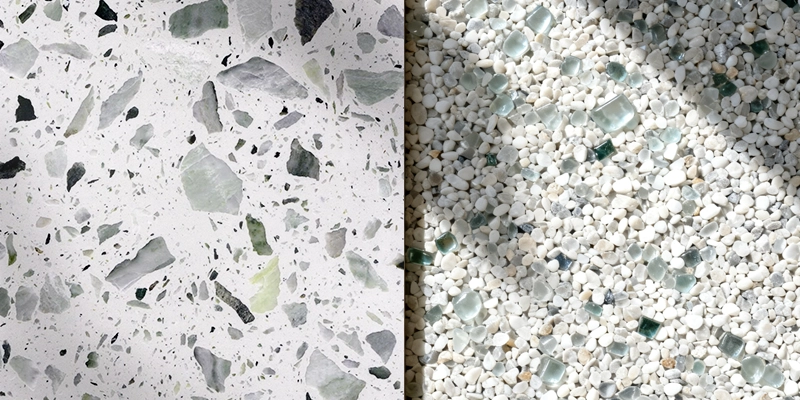
Terrazzo Tile or Poured-in-Place Floor?
When choosing between terrazzo tile and poured-in-place terrazzo, consider both the installation method and long-term maintenance:
Terrazzo tiles offer faster installation, uniform dimensions, and easy replacement. They are ideal for projects where speed and modularity are essential.
Poured-in-place terrazzo allows for seamless transitions and intricate pattern designs. However, it requires professional on-site mixing and polishing.
In high-traffic zones, poured terrazzo often performs better over time because it has no grout lines to trap dirt or moisture.
Color Selection and Surface Finish
Color choice affects not only aesthetics but also perceived space and lighting. Bright, reflective surfaces expand the sense of openness, while darker tones convey depth and sophistication.
Common finishes include:
Polished – Glossy, highly reflective, best for showrooms and lobbies.
Honed – Smooth but matte, reducing glare and enhancing traction.
Textured – For outdoor use or anti-slip applications.
The binder color should harmonize with aggregate tones. For example, gray cement complements natural marble chips, while tinted epoxy can enhance glass or quartz inclusions.
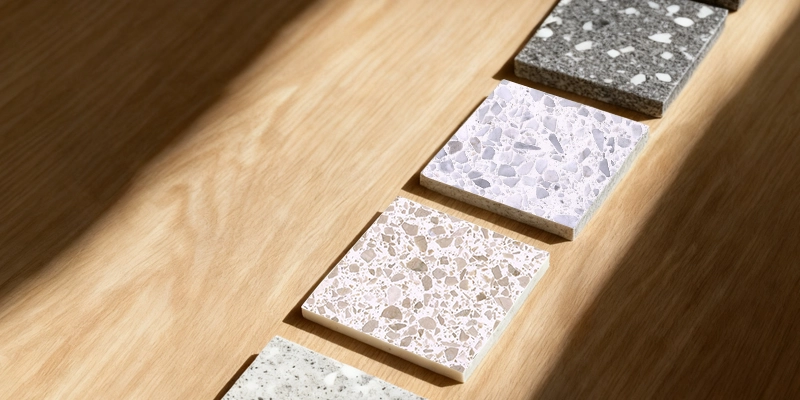
Comparing Quartz and Marble in Terrazzo
Many terrazzo & marble supply companies offer blends that combine both materials for enhanced durability and aesthetics. Quartz offers higher hardness and stain resistance, while marble provides warmth and natural veining.
When sourcing materials, verify the origin, hardness, and polishing characteristics. Reputable suppliers provide traceability for all aggregates and comply with green building certifications like LEED or ISO environmental standards.
Maintenance and Long-Term Care
Terrazzo is renowned for its low maintenance. Regular cleaning with a neutral pH cleaner and periodic re-polishing can keep the floor looking new for decades. Avoid acidic or abrasive agents that can dull the surface.
For commercial spaces, mechanical polishing every few years restores the floor's natural shine without requiring reinstallation.
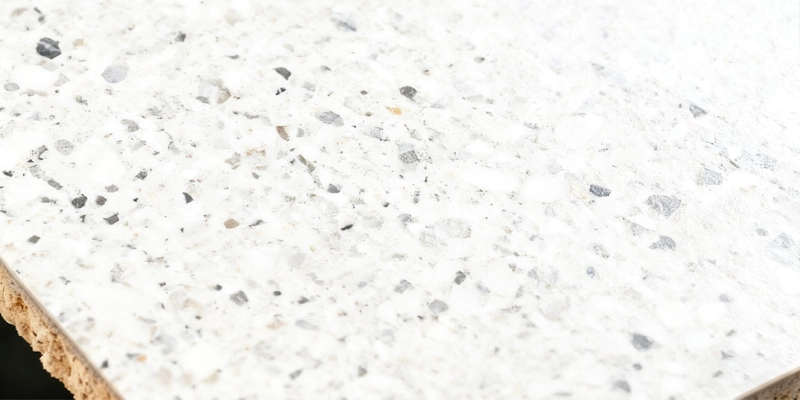
Conclusion
Choosing the right terrazzo floor involves understanding its composition, thickness, aggregate type, and color coordination. Each decision—from the material source to the finishing technique—affects both aesthetics and longevity. Whether you choose terrazzo tiles or poured-in-place flooring, partnering with experienced terrazzo & marble supply companies ensures consistent quality and professional results.
By evaluating your design vision, functional needs, and maintenance expectations, you can create a terrazzo surface that truly stands the test of time.


